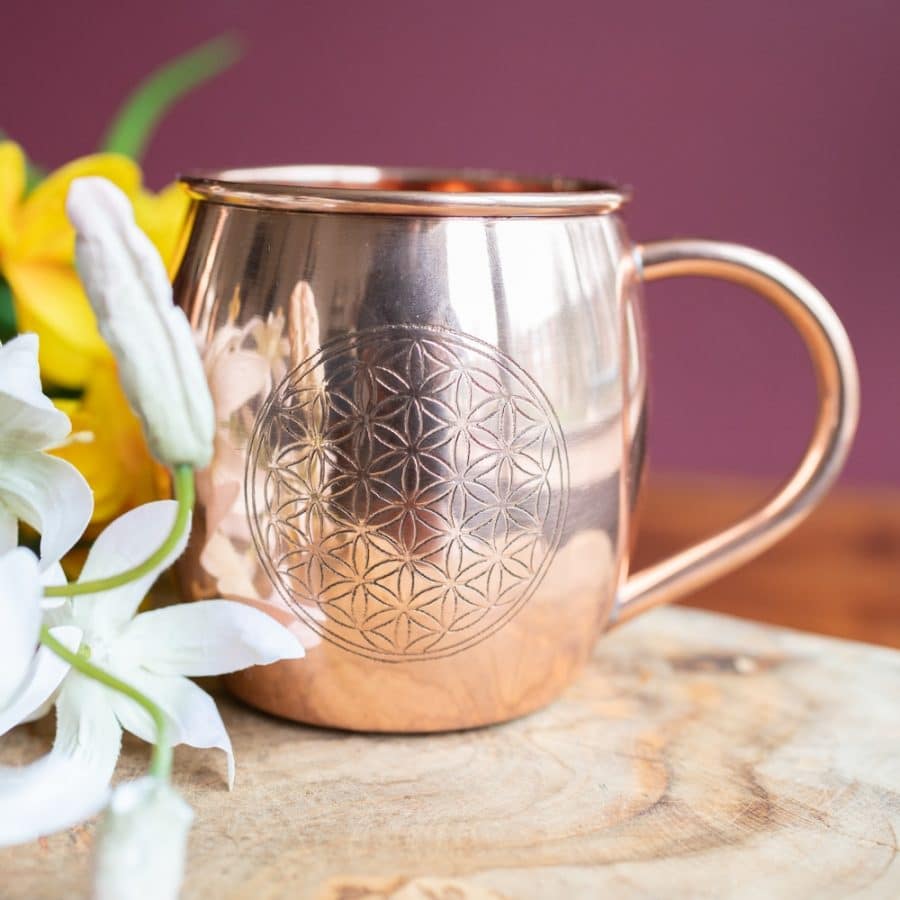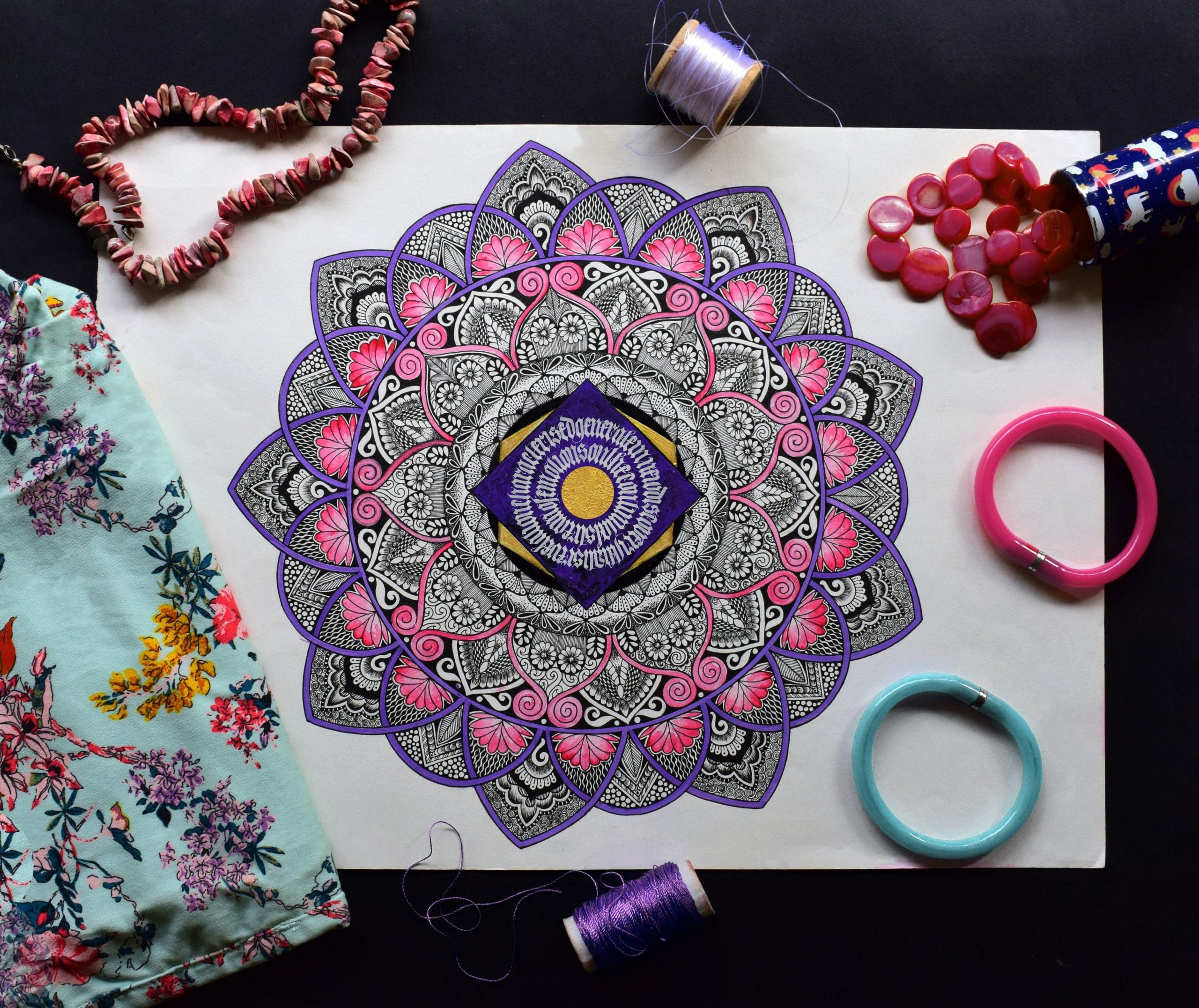The mandala is a well-known symbol. But what do mandalas stand for and where do these artful drawings come from? You will discover it in this blog!
The mandala is now a well-known symbol in the West. However, it is more often an artistic decoration. People sometimes forget about the original meaning of this magic circle. What does such a mandala circle really mean and from which cultures do mandalas originate? You will discover it in this blog!
What is a Mandala?
A mandala is a circular drawing consisting of patterns and symbols. It revolves around a center point. Most mandala drawings are symmetrical, and there is a basic geometry and structure to most. The outer edge or base is known as the Circle of Life. This circle represents all kinds of things in your daily life. For example, nature shows us the infinity of growing, blooming, and dying, thus everything exists in this cycle. The inside of the circle is a safe space. Meditating on the center of the mandala, you can find rest and peace within yourself. This spot in the center of the mandala symbolizes the cosmos and primal force. It is the place where everything began and where everything connects. This point of beginning to everything is related to the Ohm, the First Sound of Creation.
What Does Mandala Mean?
The word “mandala” comes from Sanskrit. The literal mandala meaning is ‘magic circle’. In many cultures circles represent unity and natural order. Celestial objects are round and travel in curved orbits. But also think of it as symbolic of your circle of friends or family. The circle, without beginning or end, also represents eternity. There are many levels of connection and meaning in a mandala!
Meaning Mandala as Flower of Life
The best known form of the mandala is the Flower of Life. This symbolizes harmony, connection, protection, and creation. The circles that overlap each other represent the multiple layers that make up life. For centuries, the symbol represents universal elements of existence. Many feel that the mandala flower has a healing effect and carries the energy of united consciousness. How special!
Where Does the Mandala Come From?
The concept is originally of Hindu origin, but also common in Tibetan Buddhism. Mandalas are quite common in all countries where the majority of people practice Hinduism and Buddhism. It is a well-known symbol in Buddhist and Tibetan art, where it depicts the cosmos. Buddhas and sages often appear as part of Tibetan mandalas. Mandalas are a kind of inspiration for inner enrichment. They’re also great reminders of the interconnection of the universe and the infinity of existence.
Origin Mandala Usage
Originally, the mandala was a meditation aid to monks. The magic circle would help them to achieve a deep state of inner peace. In ancient times, monks made them with colored sand. The circle is not always perfectly round, and sometimes it’s even a bit angular. Symbols, images, and other shapes often decorate mandalas, and sometimes you’ll even see flowers or oriental characters. One thing always remains the same: everything is arranged around the center. Even though it still has deep meaning for many, we now see the mandala mainly as an art form. For example, think of wood carvings, wall tapestries, or colorful paintings.
Check Out Our Mandala Wall Tapestries
Meaning Mandala Colors
The mandala colors carry their own energy. Colors are not just meant to be beautiful, but also to enhance the meaning of the mandala:
- Red represents warmth, energy, vitality, and fighting spirit.
- Orange shows optimism, feeling, cheerfulness, and creativity.
- Yellow represents wisdom, intelligence, curiosity, self-esteem, and logic.
- Green is the color of nature, hope, love, and harmony.
- Blue means communication, truth, stability, and reliability.
- Purple connects to spirituality, intuition, wisdom, experience, individuality, and insight.
- Pink represents love, healing, and softening.
- White is symbolic of enlightenment, purity, innocence, and harmony.
- Black is the color of renewal, mystery, and closure.
- Gold represents the sun, a soft heart, conscious living, and love for nature.
- Silver stands for the moon, the unconscious, dreams, and the emotional world.
- Brown is the color for concentration, earth, and standing with both feet on the ground.
What is Mandala Therapy?
Making mandalas has a therapeutic effect. If you decide to try it, it’s important to relax first. This way your intuition and creativity can rise to the surface. You can better choose colors to match your own energy when you’re relaxed and feeling creative. So meditate for a while, step on the yoga mat, or take a long walk in nature. Make a connection with yourself, before drawing this symbol of connection!
When you’re ready to start, then place a dot in the center and let the layers grow outward. You don’t nee to force it, so just take all the time you need! You unconsciously give your mandala meaning this way. Once you’re at it, you’ll find it’s very relaxing, almost like therapy! Your concentration, creativity, and inner peace are naturally stimulated this way. You don’t even have to be a creative type to benefit from making mandalas. If being artistic is too intimidating, then use a mandala pattern or mandala template to make one. Just dare to surrender to the moment!
More Symbolism at Spiru
Now that you know where these magical wheels come from and what they mean, you may have also become curious about the meaning of the the Lotus Flower or a Buddha Statue. Or look into the Chakra Colors to make a mandala to match your energy needs. Whatever you want to Know About Spirituality, you will discover it at Spiru!






















 Nederland
Nederland
 België
België
 Deutschland
Deutschland
 Europe
Europe
 España
España
 Sverige
Sverige
 Français
Français